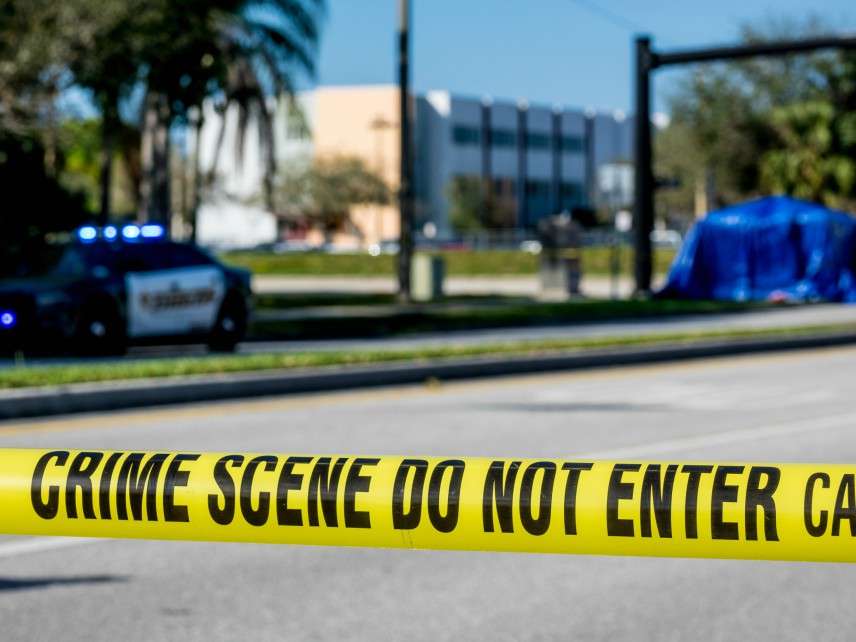An 'Assault Weapon' Ban Won't Stop Mass Shootings
Congress can't "stop the killing...by changing the law."

Yesterday's mass shooting at Marjory Stoneman Douglas High School in Parkland, Florida, has predictably provoked renewed calls, long on outrage and short on logic, for a federal ban on so-called assault weapons. "We don't want your prayers," writes New York Daily News columnist Linda Stasi, responding to Donald Trump's post-massacre tweet. "What we want from you right now is to ban assault weapons; we want you to make it impossible for civilians to have AR-15s. Period. We want YOU, elected officials, to stop killing our children while praising God. You know nothing of God, because if you did, you phony liars, you'd stop the killing without question by changing the law."
Americans own something like 15 million AR-15-style rifles, which have been one of the biggest-selling firearm categories during the last decade or so. These guns are almost never used to commit violent crimes. According to the FBI, rifles of all kinds accounted for just 3 percent of firearm homicides in 2016, while handguns accounted for 65 percent. Contrary to what you may have heard, handguns are also by far the most common choice for mass shooters. A Mother Jones review of mass shootings from 1982 through 2012 found that 66 percent of the weapons were handguns, while just 14 percent would qualify as "assault weapons" under the definition used in a 2013 bill sponsored by Sen. Dianne Feinstein (D-Calif.). More recent data show a similar pattern.
Politicians, activists, and journalists who have decided to blame mass shootings on "assault weapons" either do not acknowledge these facts or wave them away. "While semi-automatic handguns still account for the vast majority of weapons used in mass shootings across the United States," says The Miami Herald, "semi-automatic rifles are increasingly common weapons of choice." How can certain kinds of guns be "weapons of choice" when other guns are chosen much more often?
It is true that the guns Feinstein wants to ban show up more frequently in the modern mass shootings with the highest death tolls. But two points should be kept in mind when considering those attacks.
First, it is clearly possible to carry out attacks similar to yesterday's, which killed 17 people, without using "assault weapons." Nine of the mass shootings with the 20 highest death tolls involved handguns or long guns that are not covered by Feinstein's bill. That includes the third deadliest mass shooting, which killed 32 people at Virginia Tech in 2007, as well as two other attacks that killed 17 or more people.
Second, the fact that the perpetrators of the deadliest mass shootings tend to favor "assault weapons" does not mean that choice makes the attacks deadlier than they otherwise would be. That proposition seems pretty doubtful in light of the "assault weapon" definitions used by legislators, which are based on appearance rather than lethality.
The latest version of Feinstein's bill covers any semiautomatic rifle with a detachable magazine if it also has a pistol grip or forward grip, a grenade launcher or rocket launcher, a barrel shroud, a threaded barrel, or a folding, telescoping, or detachable stock. Those features may help explain why some mass shooters like the looks of these guns (just as Feinstein hates the looks of these guns), but they do not explain why one mass shooter kills 10 people while another kills five.
Feinstein's bill does not apply to the millions of "assault weapons" that are already in circulation, so it would not actually "make it impossible for civilians to have AR-15s," as Linda Stasi recommends. But even if the government could magically make all the guns targeted by Feinstein disappear, there is no reason to believe it would have a noticeable impact on the frequency or lethality of mass shootings. The notion that legislators can "stop the killing…by changing the law" is perennially appealing, but it is completely divorced from reality.



Show Comments (188)